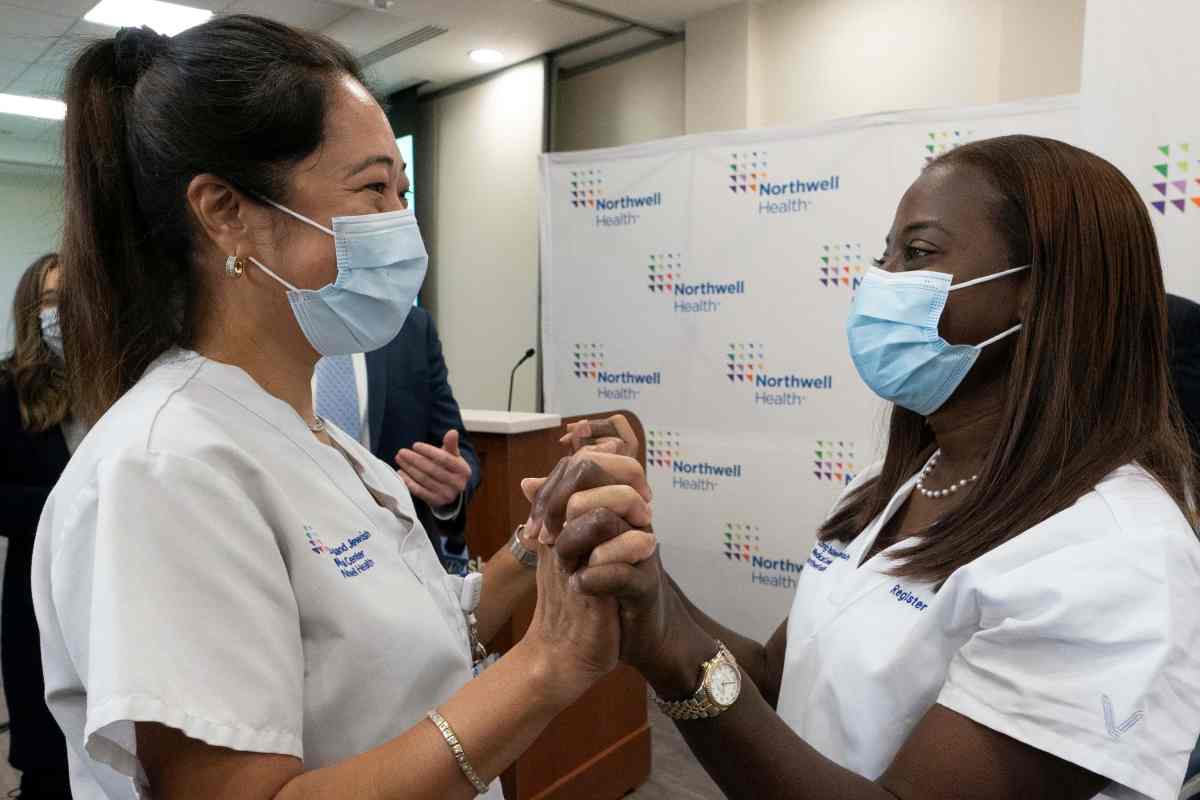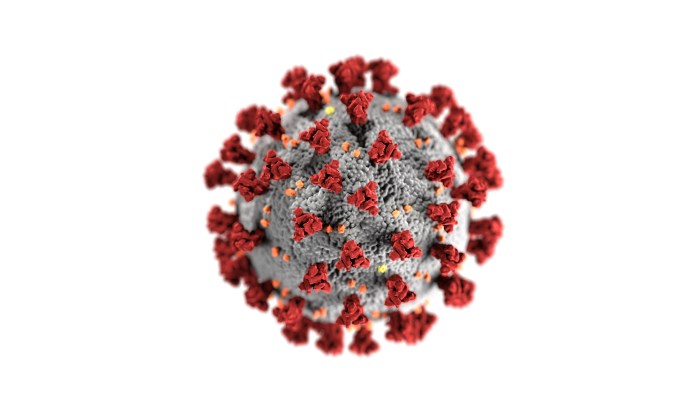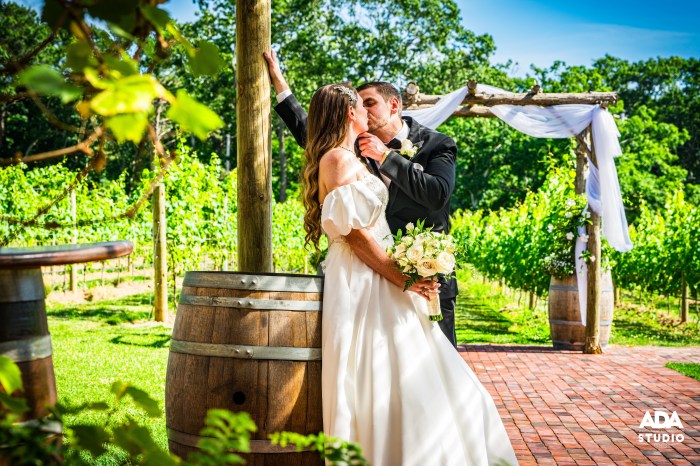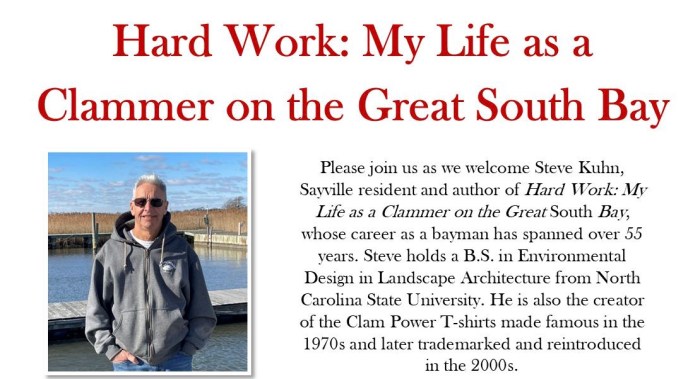Heroic. That is the best word to describe the selfless acts that doctors, nurses, and other medical professionals have performed while bravely serving on the front lines of the coronavirus pandemic.
Since the first Covid-19 case was confirmed on Long Island in March, countless stories have emerged describing the heart-wrenching decisions medics have had to make, such as holding patients’ hands as they die alone because family members were unable to visit due to restrictions meant to curb the virus’ spread.
For their efforts, the Press has deemed LI healthcare heroes “People of The Year” for 2020. These are some of their stories.
THE TRAVELING NURSE
The coronavirus pandemic has restricted almost everyone’s freedoms in America, but for Meghan Lindsey it has done the opposite. This is the freest she has ever felt.
Traveling to New York at age 33 to work as a Covid-19 nurse was the first time that Meghan, a married mother of two, had ever left southwest Missouri.
“It was my first time on a plane,” she said, describing how she came to work 12-hour shifts in the intensive care unit at NYU Winthrop Hospital, now known as NYU Langone Hospital – Long Island, in Mineola. “Flying into New York was the first time I’d ever seen the ocean.”
There are many stories about the lonely coronavirus deaths in the city’s hospitals and the traumatic work of the nurses who staff them.
Meghan’s story is about unexpected opportunities. It’s a story of how the pandemic gave a woman the chance to strike out into the world, confront danger and make a difference, and how her husband stayed home to care for their daughters. It’s a story about new beginnings.
“This was a once-in-a-lifetime opportunity to do something meaningful,” said Meghan Lindsey.
“I always wanted to do something for my country,” said Meghan. “This was a once-in-a-lifetime opportunity to do something meaningful.”
Meghan’s first nursing shifts in New York were a shock.
There are a lot of sick people in Missouri with chronic diseases like diabetes, where the progressions are slow and the declines are familiar. COVID-19 patients are stunned by a virus that turns their lives upside down and in many cases ends them.
“One of my patients had her toes done up all nice and pretty and still had her jewelry on,” said Meghan.
Because they were coronavirus patients and visitors were banned, it was Meghan who would hold their hands as they died.
“Once you FaceTime and you meet their family and you hear them crying and sobbing, you know their cute little nicknames and you start to know them, it just gets to be really personal,” said Meghan. “You have a hard time separating yourself and not truly grieving for them as well.”
Despite all the death, Meghan’s time in New York’s Covid-19 wards was unexpectedly affirming. The pandemic gave Meghan something that her life in Missouri so far had not: a feeling of everything sliding into place.
When Meghan graduated from nursing school, it wasn’t as she imagined. It turned out to be just a job. She mourned.
“Now for once, it’s actually something important,” said Meghan. “This is the first time since I’ve become a nurse that it’s like, ‘Yes, this is why.’ I can make a difference, and I can help, and I am strong enough for this.”
Her kids, she said, are proud of her. “They know that what I’m doing is hard and that I put my life in danger.”
Meghan often wondered if she should come home. Her husband Aaron told her no. He and the girls were fine, what she was doing mattered and he was proud of her. He sometimes called her “superwoman.”
“If he wasn’t such a good dad and there for my children, I could never do this,” said Meghan.
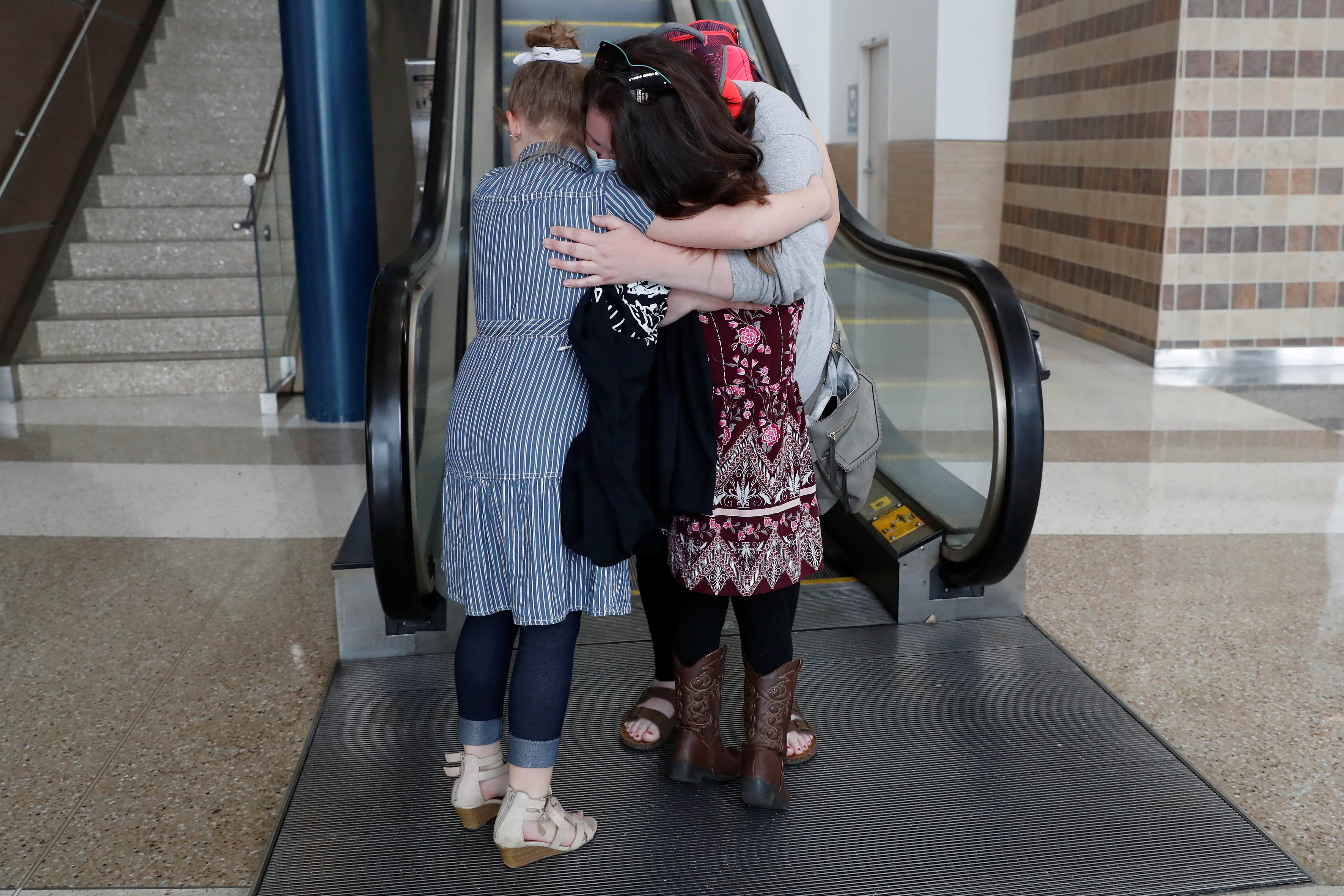
THE PEDIATRICIAN
When a 3-year-old patient of New York pediatrician Dr. Greg Gulbransen dislocated her arm, he told her parents not to take her to the emergency care center, fearing that going there could put the family at risk of contracting Covid-19.
Instead, he said, he met them on their front lawn, where he popped the girl’s joint back in.
“It is a very easy thing to do, but it made a huge difference for them,” he said.
Gulbransen has had to rethink how he runs his pediatric practice on Long Island since the coronavirus crisis started.
He said he was worried about his pediatric patients picking up on their parents’ anxieties, as well as the health and financial welfare of his staff.
“The anxiety level is palpable,” said Gulbransen.
“But it’s a privilege,” he said, adding, “you’re here for your patients. You gotta push and do whatever it takes.”
THE PHYSICIAN’S ASSISTANT
“Home soon,” Madhvi Aya of Floral Park texted from her hospital bed. “Love you.”
It was the last exchange she had with her only daughter, 18-year-old Minnoli. Three days later, Madhvi Aya died of Covid-19.
Aya, 61, was a physician assistant who had treated patients with the coronavirus. Then she became a patient herself.
She was admitted to Long Island Jewish Medical Center on March 18 after being infected and died 11 days later. Her family believes she contracted the respiratory illness at her workplace — the emergency room at Woodhull Medical and Mental Health Center in Brooklyn.
She told her husband and daughter that she had treated infected patients while wearing only a surgical mask, which offers little protection from airborne infection. Woodhull hospital declined to comment on Aya’s case or whether the facility had been able to provide its staff with enough protective gear amid widespread shortages nationally.
Aya is among dozens of U.S. healthcare workers identified by Reuters as having died after being diagnosed with or showing symptoms of the virus. They include nurses, doctors and technicians who have died in the United States after contracting the disease, according to interviews with hospitals, union representatives and families and a Reuters review of local media reports and obituaries.
There’s no official tally of the deaths among U.S. healthcare workers, and the total could be much higher than the number counted by Reuters.
FIRST VACCINE
An employee at Northwell Health’s Long Island Jewish Medical Center gave Pfizer’s Covid-19 vaccine to the first New Yorkers to receive the vaccine on Dec. 14. Sandra Lindsay, a critical care nurse at the New Hyde Park hospital, was the first person to get the vaccine in the state and the nation.
“I feel hopeful today,” Lindsay said. “Relieved.”
Michelle Chester, Northwell’s director of employee health services, administered it in the presence of Northwell president and CEO Michael Dowling.
“This is a special moment, a special day,” Dowling said. “This is what everybody’s been waiting for — to be able to give the vaccine, and hopefully this is the beginning of the end of the Covid issue.”
Chester took just one minute to prepare and administer the vaccine, an effort that was met by applause and cheers from Gov. Andrew Cuomo and staff on-site at LIJ, including Lindsay herself.
“It didn’t feel any different from taking any other vaccine,” Lindsay said. “… We all need to do our part to put an end to the pandemic, and to not give up so soon.
“There’s light at the end of the tunnel,” she continued, “but we still need to continue to wear our masks, to social distance … I trust science. What I don’t trust is that if I contract Covid, how it will impact me or those who I come in contact with. So I encourage everyone to take the vaccine.”
-With Reuters and Briana Bonfiglio
For more coronavirus coverage, visit longislandpress.com/coronavirus
Sign up for Long Island Press’ email newsletters here. Sign up for home delivery of Long Island Press here. Sign up for discounts by becoming a Long Island Press community partner here.



